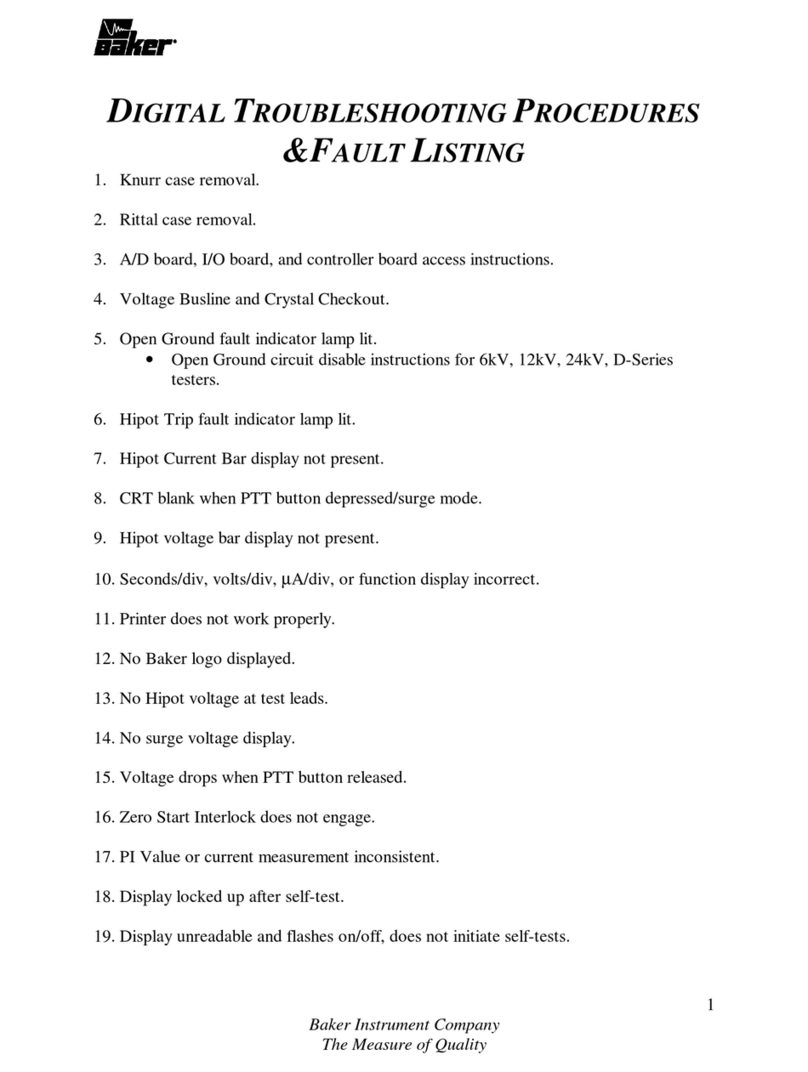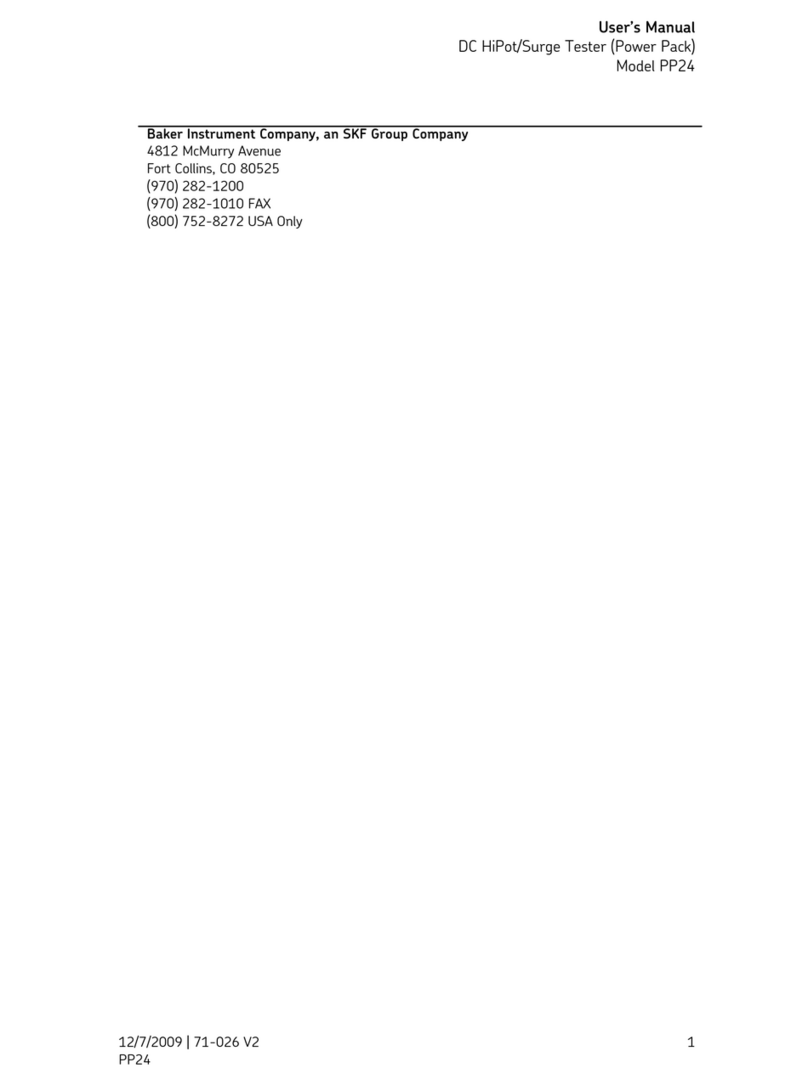
2/24/2010 | 71-018 V11 EN
D12R, D6R, D3R Users Manual
3
Users Manual ...........................................................................................................................................1
Intended use of instrument ................................................................................................................... 1
Warranties; Disclaimers.......................................................................................................................... 2
Limited Warranty as to Baker/SKF Brand Products. .................................................................... 2
Trademarks .............................................................................................................................................. 2
Preface...............................................................................................................................................................7
Important safety information..................................................................................................................... 7
General Safety Precautions ...................................................................................................................7
Safety term definition ............................................................................................................................. 7
Other Important Safety warnings .........................................................................................................7
Symbols on equipment...........................................................................................................................8
Other Information ........................................................................................................................................ 8
Cleaning & decontamination..................................................................................................................8
Technical assistance / Authorized Service Centers ............................................................................ 9
Accessory interconnection and use....................................................................................................... 9
Intermittent operation limits.................................................................................................................. 9
Installation requirements .......................................................................................................................9
Unpacking the unit .................................................................................................................................. 9
Pollution Degree II...................................................................................................................................9
Power requirements ............................................................................................................................... 9
Environmental conditions....................................................................................................................... 9
Declaration of Conformity.........................................................................................................................10
1........................................................................................................................................................................11
Instrument Overview .....................................................................................................................................11
Front panel controls ..................................................................................................................................11
Test lead connections .......................................................................................................................13
On-line labels .........................................................................................................................................14
Safety precautions for setup................................................................................................................14
Initial tester power-up and checkout .................................................................................................15
Using the footswitch..............................................................................................................................15
2........................................................................................................................................................................17
Test sequence, voltages & applicable standards.......................................................................................17
Recommended testing sequence.............................................................................................................17
1. Coil Resistance test...........................................................................................................................17
2. Megohm test......................................................................................................................................17
3. Principles of the Dielectric Absorption (DA) test ..........................................................................17
4. Principles of the Polarization Index (PI) test.................................................................................17
5. DC HiPot test.....................................................................................................................................18
6. Surge test...........................................................................................................................................18
Recommended test voltages – HiPot and Surge tests ....................................................................18
Applicable Standards.............................................................................................................................20
3........................................................................................................................................................................21
Coil Resistance testing...................................................................................................................................21
Principles of Coil Resistance testing........................................................................................................21
Other Important Safety warnings .......................................................................................................21
Resistance Test Display ........................................................................................................................22
Resistance test checklist.......................................................................................................................22
Auto ranging Resistance measurement algorithm...........................................................................23
Saving & recalling measurements ......................................................................................................24
Indications of problems in a motor.....................................................................................................24
4........................................................................................................................................................................25
Principles and theory of DC testing.............................................................................................................25
Principles of DC testing.............................................................................................................................25
5........................................................................................................................................................................29
Performing high voltage DC tests................................................................................................................29
Other Important Safety warnings .......................................................................................................29
The test display ..........................................................................................................................................30





























